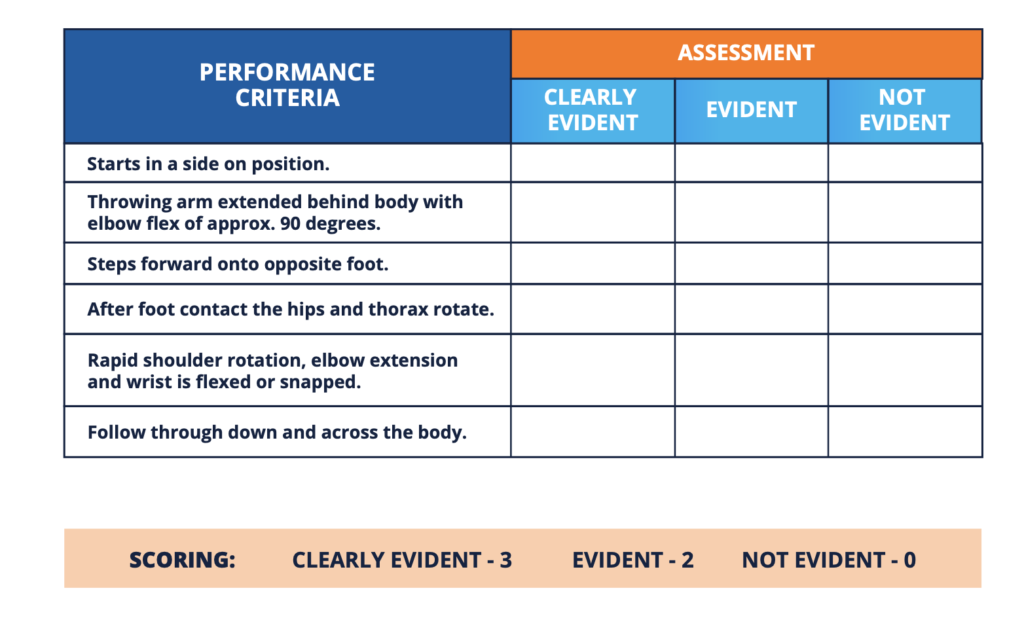The sporting action of throwing is critical to success in many physical activities and sports.
An athlete’s ability to adapt this sporting action will enable successful performance in varied environments and an inability to master the correct action will limit opportunities for maximal participation.
The correct sporting action for throwing should demonstrate the following:
* Side on stance.
* Throwing arm extended behind the body with elbow flex of
approximately 90 degrees.
* Step forward onto the opposite foot to the throwing arm. * Hip and thorax rotation and shoulder abduction.
* Elbow extension, shoulder rotation and forearm pronation. * Wrist moves from hyperextension to extension.
* Follow through down and across body with wrist flexion.
THE ACTIVITY
Aim: To perform an analysis of the sporting action of throwing. Equipment: Tennis balls, Video Analysis Apps
Procedure: Observe the throwing action of one or more class members and use the table below to analyse the movement pattern.
If video analysis apps are available the subject’s throwing action can be recorded and then played back as many times as necessary. If video analysis apps are not being used, the subject will throw enough times for adequate observation to take place and the table to be completed.

Discussion :
1. In biomechanical terms, discuss the mechanical purpose of each part of the skill;
(a) Start with a side on stance.
(b) Throwing arm extended behind the body.
(c) Throwing arm starts in a flexed position.
(d) Hip and thorax rotation.
(e) Rapid elbow extension.
(f) Wrist moves from hyperextension to extended position.
(g) Arm follows through down and across body and wrist snaps.
2. Rate the subject(s) observed with a score out of 18.
3. Which phase(s) of the skill did the subject perform worst in? Suggest possible reasons for this.
4. Suggest how these errors could be biomechanically altered to improve the throwing action. Justify your suggestion

